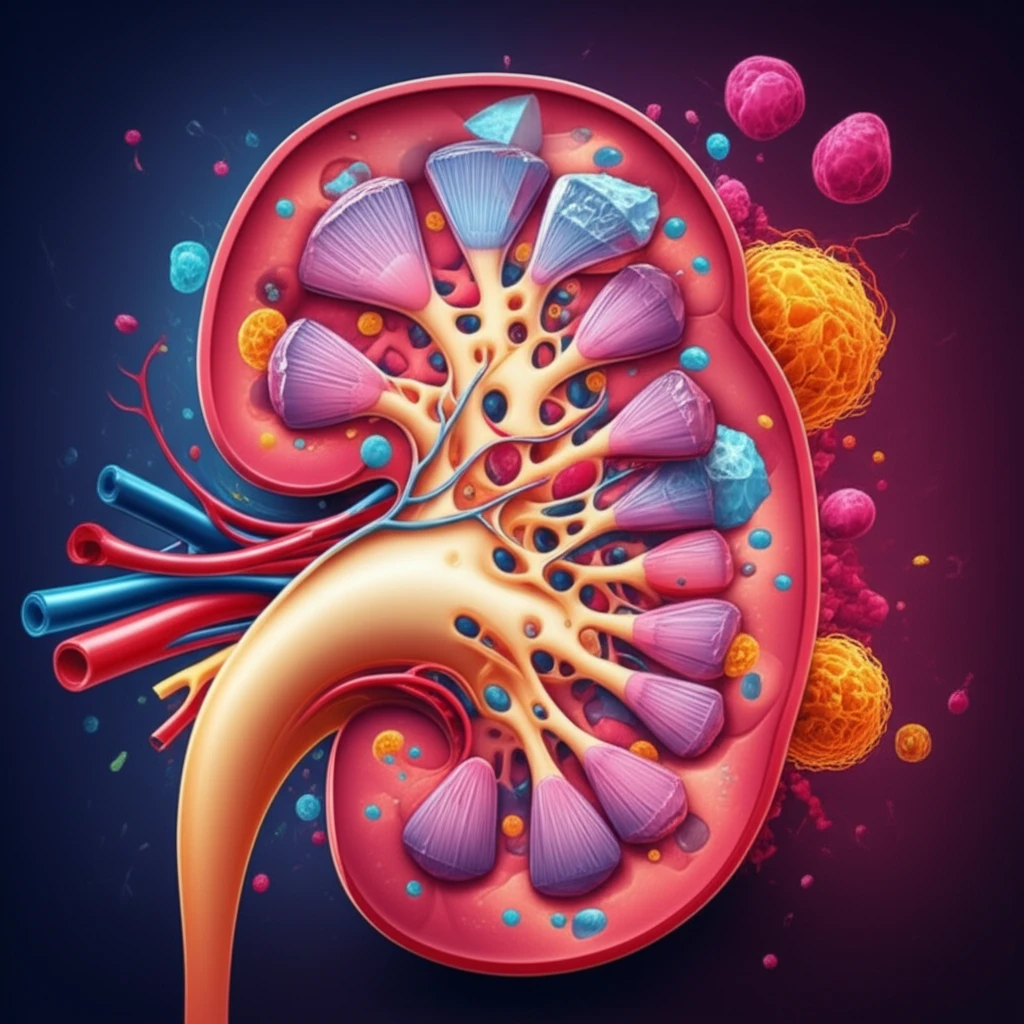
Kidney Stones: Is Your Body Triggering Its Own Crystal Crisis?
"New research reveals how urothelial proliferation in the kidneys could be a key factor in the development of renal crystal deposits, offering potential insights for prevention."
Kidney stones, a common ailment affecting a significant portion of the population, are often attributed to factors like diet and hydration. However, emerging research suggests a more complex picture, highlighting the role of processes within the kidney itself.
A recent study delved into the early events of kidney stone formation, specifically focusing on how crystals bind to the inner lining of the kidneys, known as the urothelium. The findings suggest that urothelial proliferation, or the rapid growth of these cells, may be a critical trigger in the development of renal crystal deposits.
This article explores the surprising link between urothelial proliferation and kidney stone formation, drawing on the study's insights to shed light on potential preventative strategies and the future of kidney stone research.
The Urothelium-Crystal Connection: How Cell Growth Can Lead to Stone Formation

The study, conducted on a murine model, investigated the effects of vitamin D supplements, along with water containing hydroxyl-L-proline, ammonium chloride, and calcium chloride, on kidney crystal formation. Researchers compared a group receiving Fibroblast Growth Factor 7 (FGF7), a mitogen that stimulates urothelial cell growth, with a control group.
- Urothelial Proliferation: The FGF7 group exhibited significant urothelial cell proliferation, indicating rapid cell growth in the kidney lining.
- Uroplakin III Downregulation: A decrease in uroplakin III, a protein found in urothelial cells, was observed in the FGF7 group.
- CD44 Expression: The FGF7 group showed de novo expression of osteopontin receptor CD44, which plays a role in cell adhesion and crystal retention.
What This Means for You: Preventing Crystal Buildup and Future Research
The study's findings highlight the importance of maintaining a healthy kidney environment to prevent excessive urothelial proliferation. While the research was conducted on animal models, the implications for human health are significant.
Future research should focus on identifying specific factors that trigger urothelial proliferation in the kidneys, as well as exploring potential therapeutic interventions to regulate cell growth and prevent crystal adhesion. Understanding these mechanisms could lead to more targeted and effective strategies for preventing kidney stone formation.
By understanding the interplay between urothelial proliferation and crystal formation, we can move closer to personalized strategies for preventing kidney stones and promoting long-term renal health.
